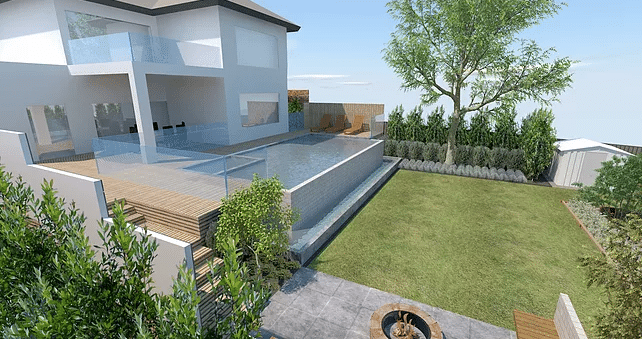What Makes A Great Design & Ultimately A Great Landscape?
February 9th, 2017 | 2 min read
By Andrew Whyte

This starts with your aim, that is, when the landscaping is complete, what do you want to ‘think and feel’ about the space? What do you want others to think and feel? This may be, “I want the Wow factor and have people say how amazing it is” – clients who ask us for this are actually very few as most people prefer to be more conservative.
The wow garden will generally involve a greater budget, as unique and artistic pieces are included, along with the finest materials and more substantial elements such as walls clad in stone or pools or perhaps elaborate structures built to entertain.
“…what do you want to ‘think and feel’ about the space? What do you want others to think and feel?“
A more common aim is, “I want the outdoor space to have the same style as my home. I want it to be clean lines and simple, not cluttered. I want to feel at ‘home’ in the garden. When I or my friends look at it I want them to feel it is aesthetically pleasing and inviting, somewhere they want to be in”.
Less common we have those who wish to remove the repugnant. This may be the inherited garden when you bought the house, the one with the pergola that leaks; weeds taller than children, etc. Some clients aren’t after the above two aims, they just don’t want to be repelled by it. These projects are usually a simple design to make things neat and tidy. It may be done for re-sale of the house or for those who are house bound due to illness and can’t go out much.
There will be other ways in which you may express the ‘aim’, but it is worth understanding this before starting any design. It is what the designer will always reference back to.
Okay, so you have articulated what is it you want to see in the end, now we list the elements, i.e. pergola; cubby house; lemon tree, lighting, pool, etc. Once you have listed the elements of the garden (or jigsaw pieces if you will), it is the designers’ role to ‘integrate’ them into the whole. This is all about composition. This includes ‘everything’ that would add or detract from the ‘aim’ you established earlier. You want a classic English box hedge garden and then suggest a Buddha as a centrepiece, mmm, isn’t going to work! Consideration must be given to every single aspect including, colour, depth, geometric shapes, and of course, when you have done all of this you must then not forget, we aren’t creating an art piece to be viewed but interacted with. So underlining all this artistic influence is a pragmatic foundation. This is where some designers get sidetracked, I once pointed out to a client the flaws in a design she gave me which included a lovely path that went straight into a paling fence as a dead end!!- we had to re-do the entire design as it was full of lovely ‘things’ but there was no harmony, no flow, no integration.
Go visit gardens and record what it is you like about them and also what you don’t like. From there you will articulate your aim. Oh, and one last piece of advise, be free in your thinking, do not place barriers on what you like. Let your designer know these things as they may have a way to accomplish them but that exactly as you saw it, enjoy!